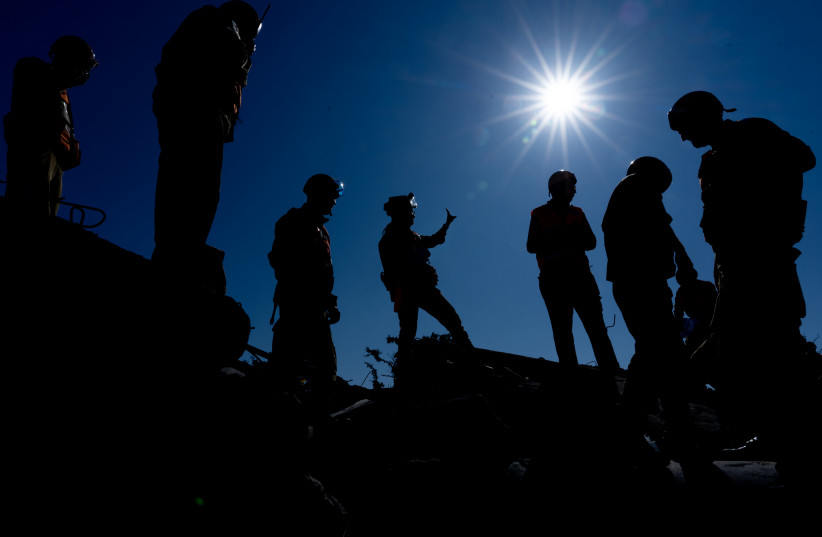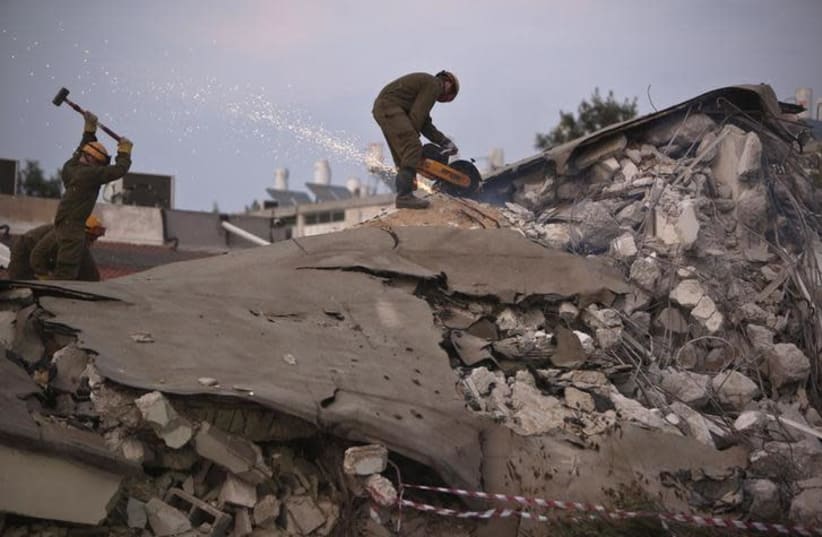Two small earthquakes rattled Israel between Saturday night and Sunday afternoon, reminding the public of the dangers a major earthquake poses to the state. Experts have warned for years that it is only a matter of time before a major earthquake will occur. This week the mayor of Beit Shean, Jacky Levy, told Army Radio that some 10,000 people could be killed in his city alone.
Levy said he was told this startling detail in 2005. It is not clear if the figure, or a higher one, is the current estimate. What is clear, however, is that there are many buildings in Israel that are unsafe.
After the collapse of a building last year in Surfside, Florida, there were several evacuations of unsafe buildings in Israel. A building in Holon collapsed a day after being evacuated; 36 families were saved by the fortunate evacuation. But the fact that a building randomly collapsed without any earthquake merely adds to the evidence of how many threats there are to the Jewish state.
Israel, which sits on the Syria-Africa fault line, has experienced several earthquakes over the centuries. Israel’s Geological Survey said that a 3.7 magnitude earthquake struck at 11:36 p.m. on Saturday night with its epicenter around 19 kilometers northeast of Beit Shean. Half a day later, at around noon on Sunday, a 3.5 magnitude quake centered close to the city of Tiberias was also felt.
In 1927, an earthquake measuring 6.2 on the Richter scale shook the Holy Land. The epicenter was at the northern part of the Dead Sea, inflicting most of the damage on Jericho, Jerusalem, Tiberias and Nablus.


More than 500 people were killed and 700 others injured. The Aksa Mosque on the Temple Mount and the Church of the Holy Sepulchre sustained significant damage, while the tower of the Augusta Victoria Hospital on Mount Scopus collapsed. Ninety years earlier, in 1837, a magnitude 6.5 quake struck the Galilee, killing an estimated 6,000-7,000 people. Safed was completely destroyed.
The small earthquakes this week are a reminder that in other places foreshocks have sometimes occurred before major earthquakes. California’s October 1989 Loma Prieta earthquake was preceded by two smaller events in June and August. The quake killed 63 people, injured 3,757 and caused $6 billion in damage.
Although construction methods have improved over the years, the population living in this area has also increased dramatically. This means that if even a small percent of buildings are damaged or destroyed, the death toll could be significant.
In Israel we tend to think of national security as being an issue involving rockets fired from Lebanon or from Gaza. However, the reality is that the rocket threat from Lebanon would not likely kill as many people or damage as many homes as a major earthquake.
Israel has plowed resources into neutralizing that threat through systems like Iron Dome and Arrow. Where is the Iron Dome for an earthquake?
We appear to be sitting and waiting for an earthquake the way Israel was unprepared for the Scud threat in the 1991 war. Planners unfortunately only tend to take matters seriously when something bad happens. When we look at the record of the region and see that major earthquakes occur every century, we can’t afford to just wait and then plan for the “next one.”
A national survey of buildings should be undertaken and budgets that were previously approved but never allocated should be spent to prepare for the next massive earthquake. This isn’t just about making sure our cities are safe, but also looking at the region: An earthquake will cause destruction in the West Bank and possibly in Jordan.
In the past, building standards were not enforced in some minority communities in Israel. This means that Arab towns lack safe rooms, for instance. It may be a monumental task to deal with all of this, but if we don’t start now it could be too late. Our Home Front Command has the best technology and search and rescue expertise, but we need to make sure that they are not overwhelmed in the case of this clear and present danger.
